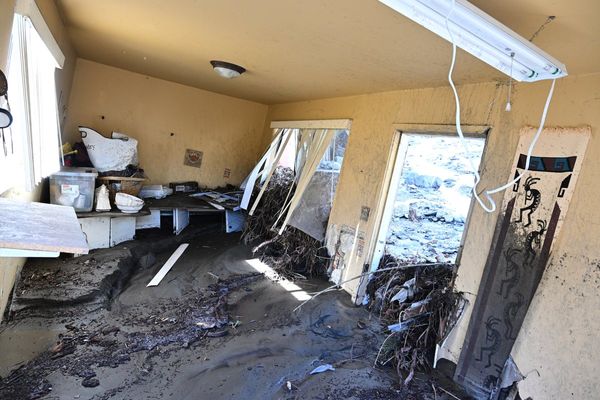
When we talk about drug overdose deaths, many of us imagine a problem that affects young people.
But new data from Australia’s Annual Overdose Report, published on Sunday, reveals a significant jump in the number of older adults dying from an overdose, compared to two decades ago.
Since 2001, unintentional overdose deaths have declined by about one-third among people under 30. But deaths in those aged 50–59 have increased three-fold. Among 60–69 year olds, deaths have nearly doubled.
So, why are more older Australians dying from drug overdoses? And what can we do about it?
What the data shows
The median age for unintentional drug-induced deaths has been rising over the past couple of decades for almost all drug types.
In Australia, opioids are still the leading drug involved in unintentional overdoses deaths. Opioids can include illicit drugs such as heroin, as well as pain medications such as oxycodone and codeine.
The new report shows opioid overdoses are increasingly killing older adults, with the steepest rises since 2001 seen in people aged 40 to 69.
Between 2019 and 2023, roughly one-third of all heroin deaths was among 40–49 year-olds (704 deaths). One in five deaths was in the 50–59 age group (451 deaths).
For pharmaceutical opioids (meaning pain medicines), deaths are even more concentrated in older groups.
More than one in three (38%) of these deaths was someone aged 50 or over. The 40–49 year-old age group again had the most deaths (619, or 28%), followed by 508 deaths among 50–59 year-olds (23%) and 330 deaths among those aged 60 and over (15%).
So, why is this happening?
Drugs affect older people differently
Older people tend to have more health conditions and use more prescription medicines. Some of these can have harmful interactions with other substances.
Opioids are particularly risky as they can slow your heart rate and breathing. Combining these with alcohol or sleeping tablets, which do the same, can lead to unintentional overdose.
As we age, we also don’t process drugs in the same way as when we were younger. Slower liver and kidney function means medications can build up to dangerous levels, even at doses that previously did not cause side-effects. So regularly reviewing medication and dose with a doctor is important.
While media and policy often focus on preventing drug harm among younger people, the specific risks for older adults are less often discussed – and can stay hidden.
Older people who use illicit substances or non-prescribed pharmaceutical medicines also face stigma, and we know this can prevent them asking for help.
Health professionals can also be reluctant to raise concerns. Research shows they may be less likely to ask older adults about substance use compared to younger people.
The at-risk cohort is ageing
Another factor is the “ageing cohort theory”. This suggests drug-related deaths are happening in the same group of people who were at risk decades ago – those who began using drugs as young people in the 1980s or 1990s and are now middle-aged.
Australia’s pattern of drug-related deaths is similar to the United Kingdom, where deaths are highest among 40–49 year-olds, while rates fall in younger groups.
We also know that fewer young people are starting to inject drugs in Australia.
National estimates suggest the median age of people who inject drugs has risen from about 28 years old to over 43, and the average age of first injection has shifted from the late teens (18–20 years) to the late 20s or early 30s (30–34 years). This supports the theory deaths are affecting an ageing group, rather than a new generation starting to inject.
As they age, this group is also likely to have additional health conditions and medication use that further increase their risk of overdose.
We know what works
The good news is we have effective treatments for people who have developed problems with opioids.
These are sometimes called “opioid agonist treatments” (specifically methadone and buprenorphine) and are effective at helping people stop or reduce their opioid use and improve their health.
These treatments have been proven to halve the risk of overdose death.
Yet, despite their effectiveness, many people don’t access treatments.
Barriers include cost, stigma and treatment regimes being too inflexible or not easily available. For example, needing to attend a community pharmacy every day for dosing can prevent people seeking care.
But new treatments, which can be given just once a month, may help make it more accessible.
However, demand for treatment still exceeds what is available. In Australia, around a third to half of the population who want and need drug treatment currently cannot get it because we don’t have enough treatment places.
This means we still have some work to do to make the treatments that prevent overdoses accessible enough to reduce drug harm.
In Australia, naloxone is now accessible in pharmacies and other harm reduction services without a prescription and free of charge. This medicine can reverse an overdose caused by opioids, and can be easily administered by a trained layperson.
For older adults who use opioids for pain, resources around opioid safety and naloxone have been specifically developed. These include assessing individual risk with current medications, and creating a personalised safety plan.
Addressing overdose in Australia requires us to broaden how we think about drug harms. It’s not just a “youth issue” but one that increasingly affects people in midlife and beyond.
This means health systems must adapt to older people’s needs. Stigma and limited treatment places should not prevent people from receiving help, and conversations about substance should be routine for all age groups.
Recognising and treating existing health conditions, while providing information about safe medication use, may also lower older people’s risk of an overdose.
If this article raises issues for you or someone you know, call the National Alcohol and Other Drug Hotline on 1800 250 015. Other support is also available.
Suzanne Nielsen receives funding from the Australian National Health and Medical Research Council, the Victorian and Commonwealth governments, The National Centre for Healthy Ageing, and the Ian Potter Foundation. She is the president-elect of the Australasian Society for Professionals on Alcohol and other Drugs.
Tina Lam receives funding from the National Centre for Healthy Ageing, the Monash Data Futures Institute, the NHMRC, the World Health Organization, and the Ian Potter Foundation. She is a member of the Australasian Professional Society on Alcohol and other Drugs and the Australian Association of Gerontology.
This article was originally published on The Conversation. Read the original article.







